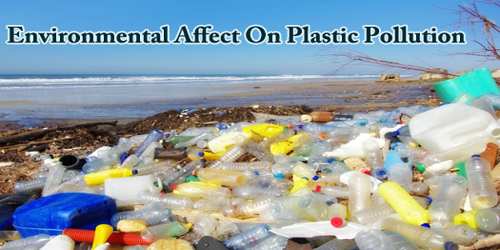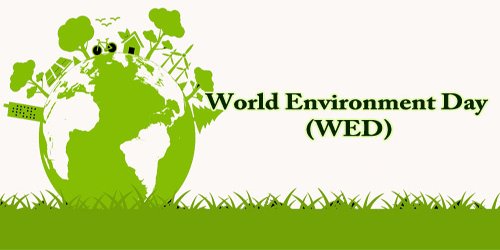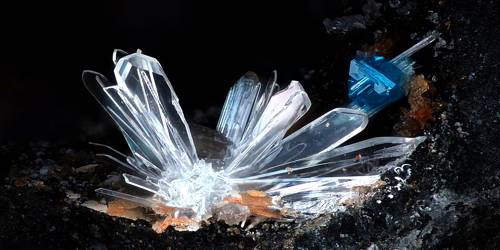Plastic Pollution was the accumulation in plastic objects as well as particles (examples plastic bottles, pouches) as well as microbeads in the life on earth atmosphere which negatively affects wild animals, habitat, or humans. Plastics which act as contaminants were categorized in and out of micro, meso, and macro rubble, and predicated on size. However, the chemical structure of most plastics renders them resistant to many natural processes of degradation and as a result they are slow to degrade. Together, these two factors have led to a high prominence of plastic pollution in the environment.
In 1907 the invention of Bakelite brought about a revolution in materials by introducing truly synthetic plastic resins into world commerce. By the end of the 20th century, however, plastics were found to be persistent polluters of many environmental niches, from Mount Everest to the bottom of the sea. Whether being mistaken for food by animals, flooding low-lying areas by clogging drainage systems, or simply causing significant aesthetic blight, plastics have attracted increasing attention as a large-scale pollutant.
Plastic pollution can afflict land, waterways, and oceans. It is estimated that 1.1 to 8.8 million tonnes of plastic waste enters the ocean from coastal communities each year. Living organisms, particularly marine animals, can be harmed either by mechanical effects, such as entanglement in plastic objects, problems related to ingestion of plastic waste, or through exposure to chemicals within plastics that interfere with their physiology. Effects on humans include disruption of various hormonal mechanisms.
As of 2018, about 380 million tonnes of plastic is produced worldwide each year. From the 1950s up to 2018, an estimated 6.3 billion tonnes of plastic has been produced worldwide, of which an estimated 9% has been recycled and another 12% has been incinerated. This large amount of plastic waste enters the environment, with studies suggesting that the bodies of 90% of seabirds contain plastic debris. In some areas there have been significant efforts to reduce the prominence of free range plastic pollution, through reducing plastic consumption, litter cleanup, and promoting plastic recycling.
Some researchers suggest that by 2050 there could be more plastic than fish in the oceans by weight.
Plastic uses in daily life –
Plastics are of various types and are widely used the daily lives. It is quite tough today to find a substance lacking plastic. Thermosets or thermoplastics are used in many goods.
Several of the plastic items commonly used by people in everyday life were mentioned below Polyethylene terephthalate (PET) used bottles of water, tubes, detergent bottles, food trays in microwaves as well as in PET fabric and polyester condensers, LCDs and plastic tapes fabrics, clothes, curtains, carpets, conveyors, mouldings, tarpaulins, etc
Polyvinyl chloride floor or wall corsets, vehicle instrument sheets, electrical wiring sheaths, games, syringes, fabric covers, window frames as well as other building materials of high-density polyethene Plastic bags, trash bags, medicine bottles, empty food containers, bottles, and milk bottle liners.
Types of plastic debris –
There are three major forms of plastic that contribute to plastic pollution: microplastics as well as mega and macro-plastics. Mega and micro plastics have accumulated in highest densities in the Northern Hemisphere, concentrated around urban centers and water fronts. Plastic can be found off the coast of some islands because of currents carrying the debris. Both mega- and macro-plastics are found in packaging, footwear, and other domestic items that have been washed off of ships or discarded in landfills. Fishing-related items are more likely to be found around remote islands. These may also be referred to as micro, meso, and macro debris.
Plastic debris is categorized as either primary or secondary. Primary plastics are in their original form when collected. Examples of these would be bottle caps, cigarette butts, and microbeads. Secondary plastics, on the other hand, account for smaller plastics that have resulted from the degradation of primary plastics.
Plastic pollution impacting the earth –
The trade-in plastic waste has been identified as “a main culprit” of marine litter. Countries importing waste plastics often lack the capacity to process all the material. As a result, the United Nations has imposed a ban on waste plastic trade unless it meets certain criteria.
Today, however, the average consumer comes into daily contact with all kinds of plastic materials that have been developed specifically to defeat natural decay processes materials derived mainly from petroleum that can be molded, cast, spun, or applied as a coating. Since synthetic plastics are largely nonbiodegradable, they tend to persist in natural environments. Moreover, many lightweight single-use plastic products and packaging materials, which account for approximately 50 percent of all plastics produced, are not deposited in containers for subsequent removal to landfills, recycling centers, or incinerators. Instead, they are improperly disposed of at or near the location where they end their usefulness to the consumer. Dropped on the ground, thrown out of a car window, heaped onto an already full rubbish bin, or inadvertently carried off by a gust of wind, they immediately begin to pollute the environment.
Indeed, landscapes littered by plastic packaging have become common in many parts of the world. (Illegal dumping of plastic and overflowing of containment structures also play a role.) Studies from around the world have not shown any particular country or demographic group to be most responsible, though population centers generate the most litter. The causes and effects of plastic pollution are truly worldwide.
Air pollution seems to be a combination of solid particles or gasses in the air. Auto pollutants, contaminants from plants, smoke, pollen or mold spores may be stored as particulate matter. Ozone, a chemical, is a significant part of urban air pollution. If ozone triggers air pollution, it is also named smog. Some of the air pollutants were toxic. Man is making plastic artificially and uses a variety of toxic chemicals. As a consequence, its use and exposure to plastics have also been related to a range of health issues impacting people worldwide. Processes for making, processing, disposing, but just being near plastics can be incredibly harmful to living creatures.
Different sources of plastic pollution –
Although it may seem as easy as recycled or washed empty bottles to address chemical waste concerns, the truth is that plastic that causes pollutants may range in size from large to small.
Simple Old Trash – Plastic is all around us, even if you don’t want it to be on certain things. Milk boxes are filled in cardboard, bottles of water are passed out everywhere, and some items may even have tiny plastic objects. Each time one of these things is discarded or swept away, chemical contaminants are more likely to enter the atmosphere and cause harm.
Overused – Because plastic is inexpensive, this is one of the many commonly available but overused products in the modern world. Once disposed of, this does not decompose readily and pollutes surrounding soil or groundwater once burnt in the outdoors.
Fishing Nets – Commercial fisheries are an unfortunate necessity for several regions of the world, but loads of people eating fish for everyday life. Nevertheless, this sector has led to several ways to the issue of plastic waste throughout the oceans. The net used for some large-scale troll activities are typically made from plastic.
Second, they spend a lot of time immersed in water, releasing pollutants at will, but they often are dissolved or destroyed, leaving to live however they land. It not only kills and damages native wildlife, but it also means that contaminants swim away and fish in the area.
Plastic and Garbage Disposal – Most plastics were made from plastic, but most materials were not biodegradable, which makes it hard to dispose of. There were no natural procedures in place which can send non-biodegradable plastics to the biological cycle. It can not be recycled or left to starve in which it is discarded or spilt like a conventional waste.
Even reuse does not cut down on steel, as it utilizes existing plastics, though in a new form. The method of paper recycling may also result in the launch of plastic allergens in a variety of ways.
Major plastic polluter countries –
Around 275 million tonnes of plastic waste is generated each year around the world; between 4.8 million and 12.7 million tonnes is dumped into the sea. According to the trade association PlasticsEurope, world plastic production grew from some 1.5 million tonnes (about 1.7 million tons) per year in 1950 to an estimated 275 million tonnes (303.1 million tons) by 2010 and 359 million tonnes (nearly 396 million tons) by 2018; between 4.8 million and 12.7 million tonnes (5.3 million and 14 million tons) are discarded into the oceans annually by countries with ocean coastlines.
A 2019 study calculated the mismanaged plastic waste, in millions of metric tonnes (Mt) per year:
- 52 Mt – Asia
- 17 Mt – Africa
- 7.9 Mt – Latin America & Caribbean
- 3.3 Mt – Europe
- 0.3 Mt – US & Canada
- 0.1 Mt – Oceania (Australia, New Zealand, etc.)
In a study published by Environmental Science & Technology, Schmidt et al (2017) calculated that 10 rivers: two in Africa (the Nile and the Niger) and eight in Asia (the Ganges, Indus, Yellow, Yangtze, Hai He, Pearl, Mekong, and Amur) “transport 88–95% of the global plastics load into the sea.”
Information Sources:
















